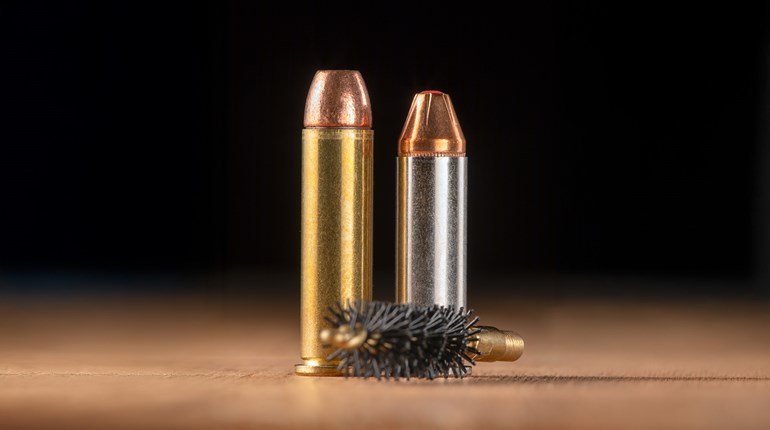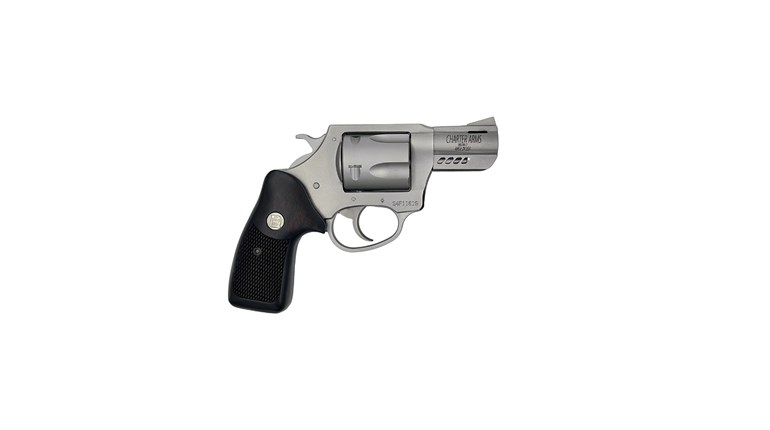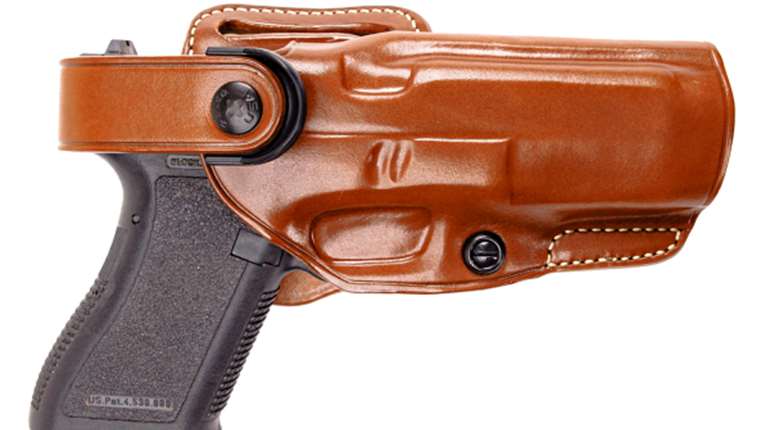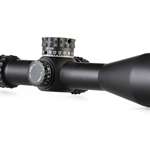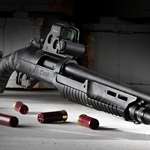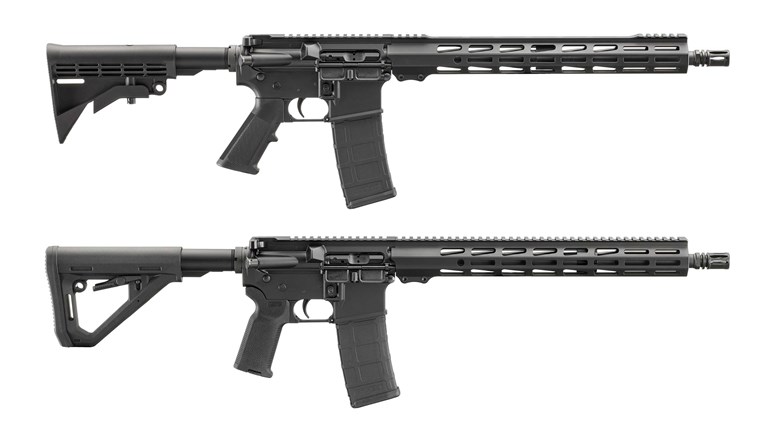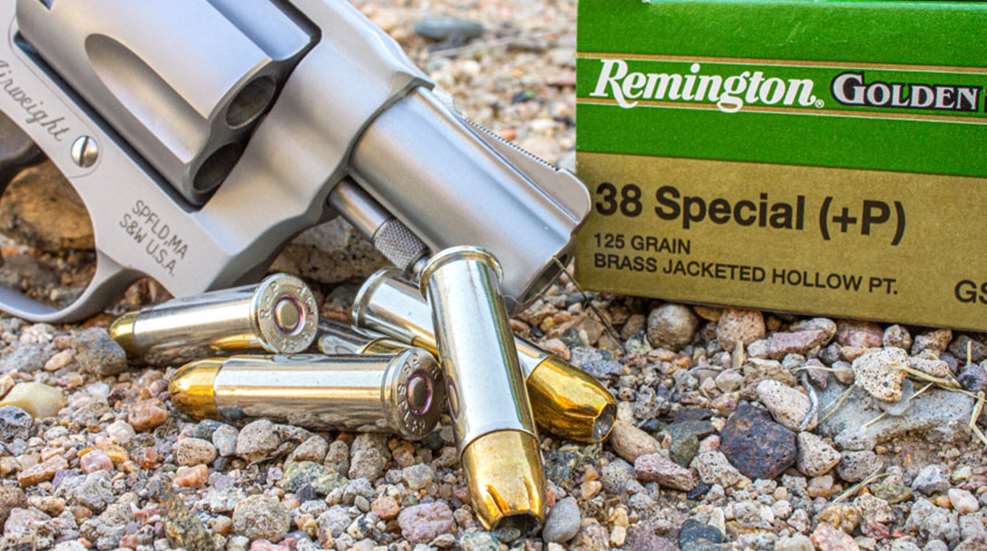
Ammunition selection is critical in any defensive handgun, of course, but even more so when you only have five rounds at a time.
Back before the subcompact, 9 mm semi-automatic became the most-popular handgun for concealed carry, the 38 Spl. was the most-prevalent cartridge for personal protection. Thousands of police officers carried one on the street, shop keepers kept them under the counter and bad guys had ’em stuck in their waistbands. My grandfather’s pride and joy happened to be a Smith & Wesson Model 10 in .38 Spl.
Today, we’re addicted to high capacity and high velocity; we want handguns that hold much more than five or six rounds, and we like bullets that leave barrels in a hurry. This modern trend has led many to regard the 122-year-old .38 Spl. as an antique. Never mind the most-popular pistol cartridge in the world—the 9 mm—was introduced only 4 years later. In the grand scheme of things, it’s just as old.
The 4-inch-barreled .38 Spl., the mainstay of law enforcement for many years, is a thing of the past. Today, the only .38s being relied upon for personal protection with any regularity are what most refer to as snubnose revolvers. My grandfather carried a gun a lot during Prohibition. He called short-barreled revolvers “two-hand guns” because they were so difficult to shoot accurately. He told me the trick was, “To hold the guy with one hand and shoot him with the other.”
The irony of the new-age fascination with short-barreled, semi-automatic pistols is that their barrels are not much longer than those on snubnose .38s. However, by already being velocity-challenged, many believe the reduced velocity of the short-barreled .38 Spl. revolver lessens its effectiveness to the point where the bullets will bounce off the bad guys. Curious to see just exactly how much effectiveness is lost with a 2-inch reduction in barrel length, I decided to conduct a test. I took nine .38 Spl. loads, with bullet weights ranging from 90 to 158 grains, and fired them into 10-percent ordnance gelatin out of two revolvers. One revolver had a 1.9-inch barrel and the other a 4-inch barrel. I also chronographed every load/shot fired. You might find the results a bit surprising.
On average, with the shorter barrel there was a 12-percent reduction in velocity (100 fps). The smallest difference—26 fps—was recorded with the Buffalo Bore 110-grain Barnes TAC-XP load. The most-extreme variation—200 fps—was recorded with another Buffalo Bore load, the +P Outdoors-man, which utilizes a 158-grain, hard-cast, Keith-style bullet. More important than the velocity loss was how the slower velocities affected terminal performance. This is because when it comes to stopping bad guys, penetration and expansion are what matter.
The average penetration depth for the nine loads fired from both barrel lengths was 14.28 inches. The average penetration variation between barrel lengths was only 0.80 inch. For all practical purposes, that’s irrelevant; individual loads can vary more than that from shot to shot. However, comprising that average were a few extremes worth mentioning.
The 140-grain Hornady XTP load penetrated 2.25 inches deeper from the longer barrel simply because of its 99-fps faster impact velocity. With the 110-grain Hornady Critical Defense load, an 85 fps decrease in velocity caused the bullet to penetrate 1.75 inches less. However, with the 125-grain Golden Saber +P load, the longer barrel delivered 3 inches less penetration because the bullet deformed with a larger frontal diameter at the only slightly higher (57 fps) impact velocity. It should be noted that the hard-cast Outdoorsman load passed through all 28 inches of gelatin, regardless whether it was fired from the 1.9- or 4-inch barrel.
With regard to expansion, there was minimal difference. The average variation in expansion between rounds fired from a 1.9- and a 4-inch barrel was a mere .04 inch. The lone exception was the Winchester Silvertip bullet. Out of the 1.9-inch barrel, it expanded with a frontal diameter of .66 inch, but out of the 4-inch barrel it had a recovered frontal diameter of only .4 inch. The higher impact velocity (132 fps) overly stressed this bullet and caused it to shed 46 percent of its original weight. Out of the shorter barrel, the bullet retained 99 percent of its weight.
There was one load that stood head and shoulders above all others. The Speer 135-grain Gold Dot Short Barrel load only varied .5 inch in penetration depth and .03 inch in expansion, even though there was an 83-fps difference in impact velocity. Obviously, this load is aptly named; Speer purposely engineered it to deliver optimum performance from short barrels. Not only did it perform near identically from both barrel lengths, it delivered what many consider optimum terminal performance from a defensive handgun. Any load that will penetrate in excess of 12 inches and expand to 1.5 or more times its original diameter is noteworthy.
The bottom line is that those who condemn short-barreled .38s because of reduced performance are wrong. The reality is that the terminal performance variation between a snubby .38 and one with a 4-inch barrel can be substantial. The key to snubnose .38 Spl. handguns for personal protection is to use the right ammunition, like the Speer Short Barrel load, and to maybe—like Grandpa said—hold them with one hand and shoot them with the other. If you follow the first bit of advice, you should have adequate terminal performance. If you follow the second suggestion, well, it’ll for sure make getting a hit a lot easier.












